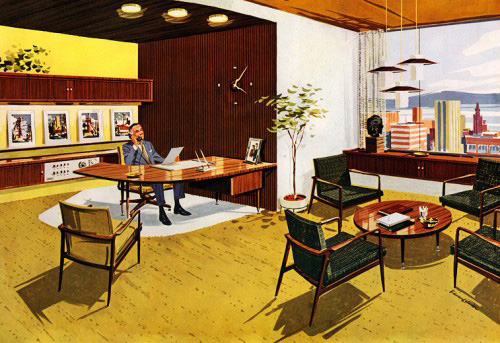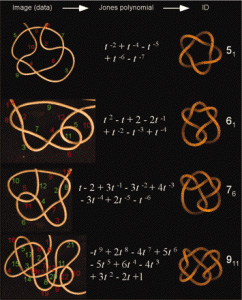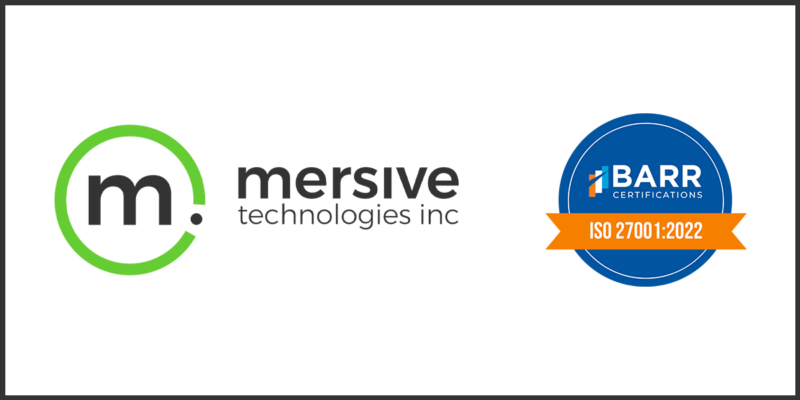Entropy and the Tangle Under My Desk

I spent part of the morning untangling the mess of cables that slowly appears under my desk as I travel, unplug and plug my laptop, bring demo gear on the road, and re-plug the various devices that are part of my day. Modern office spaces have changed over the past several decades from the hyper-simple and clean environments of Mad Men, to the audio-visual jungles that crisscross the modern conference room. Of course, there is good reason for all those cables. AV technology has proven to be a valuable component of the workplace – but the cable nests are terrible. Any AV installer (or headphone user for that matter) will lament the sorry knotted state that cables quickly find themselves in when left to their own devices. Why does this happen? Why didn’t I come in this morning to find my cables relatively ordered? Can’t we wait for a Gefen or Monster Cable to invent a cable whose native state is untangled? The answer is no – the mess of video cables that you fight through to get a meeting started is related to fundamental and universal physics.
Probabilistically, cables move from organized to a knotted mess due to a concept known as entropy. Entropy is a measure of both information content and disorder of a system. Entropy was originally coined in the middle of the last century by the physicist Rudolph Clausius to refer to the natural dissipation of stored energy. You may remember this as the second law of thermodynamics from those physics lectures you sat through in high school. In its simplest form, the second law (or law of entropy) states that the world will spontaneously minimize energy potentials over time. Examples of this law are deeply woven into the universe and can be simply explained by a glass of hot water (high energy) in a cold room, which eventually cools (dissipates to low energy). Although it’s an oversimplification – you can generally think of highly ordered systems as having higher energy than those that are disordered. It takes energy to order things, trust me. Organizing the tangle of cables under my desk took Monday morning energy I just didn’t want to spend. By organizing those cables I introduced energy into a system that, according to the 2nd law, will naturally “flow” to an unordered state over time. The law is so fundamental to how things work that some Physicists today explain why time only flows in one direction based on the second law. I simply don’t see things become organized naturally over time.knotting
 Spontaneous knotting has been studied in detail by mathematicians who are interested in a field called knot theory. Knot theory studies how rings can be moved in three-dimensional space (twisted, rotated, deformed) to create various knots. Researchers in the field assign various attributes to the knots that can be formed including complexity and total knot energy.
Spontaneous knotting has been studied in detail by mathematicians who are interested in a field called knot theory. Knot theory studies how rings can be moved in three-dimensional space (twisted, rotated, deformed) to create various knots. Researchers in the field assign various attributes to the knots that can be formed including complexity and total knot energy.
If all this still doesn’t have you convinced that tangled cables will never go away — you can also think about entropy from a probabilistic point of view. Take a few cables in a standard conference room. For example a HMDI cable to the conference room monitor, a second cable for OSX thunderbolt laptops, and a power cable. Imagine all the possible configurations of those cables – straight across the table, one cable twisted around a second, the power cable passing through a loop in the HDMI cable. There are a lot of configurations – nearly infinite. Now suppose you label each configuration as either organized or disorganized. The number of disorganized states is vastly larger than those that are organized. Entropy is simply the observation that the universe, over time, selects states that are more likely. That is, an organized set of cables, when disturbed will fall into a state that is likely disorganized.
So next time you pull headphones from your pocket, or install a large AV system, don’t be surprised at the chaos. You’ll probably not be surprised when I say that the solution to the office cable problem is straightforward – go wireless and avoid AV cables altogether! This way you can have an elegant and clean office space from the 1950′s but with all the technical advantages of 2015.





